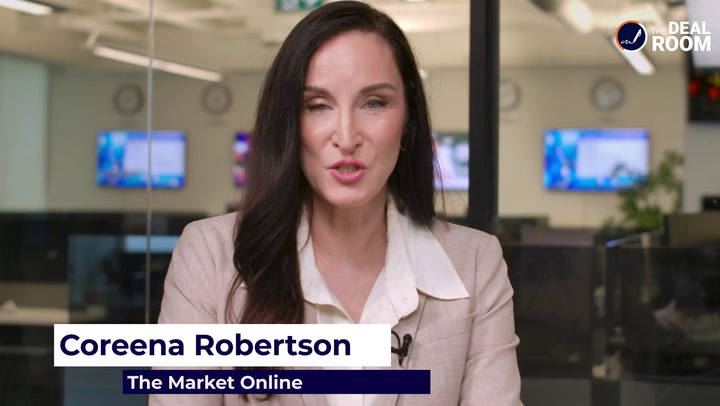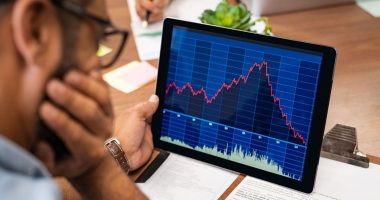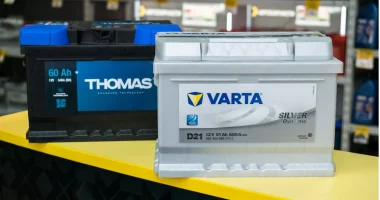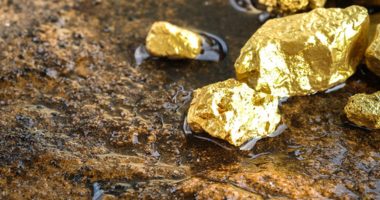Critical minerals are crucial to the future of renewable energy and clean energy applications, and companies like NioCorp Developments Ltd. (TSX:NB,OTCQX:NIOBF, Forum) are crucial to the movement going forward. Case in point, the company is in a strong position to advance its Elk Creek property in southeastern Nebraska. The company is involved the exploration and development of mineral deposits such as niobium, scandium and titanium products.
The Market Herald recently had the opportunity to catch up with the company’s CEO Mark Smith and COO Scott Honan to discuss what NioCorp has been up to and what investors can watch for.
TRANSCRIPT BELOW.
TMH: You have been in the mining and mineral development industry for a long time, and you have seen a lot of proposed projects over the years. What makes the Elk Creek Project stand out in your mind from the perspective of investors?
MS: There’s so many things. I hope I can answer this in less than 30 minutes but some of the things I think make it extremely attractive are the fact that we’ve got four critical and strategic minerals that are going to be produced from this mine. So we’ve got niobium, we have scandium, we have titanium and then we have the magnetic rare earths and we’re working on the technical part of the rare earths side, we’ll make that final decision later this year but certainly based on our decades of experience in the rarest world, we feel very confident about that moving forward. But there’s four critical strategic minerals they all go to today’s massive movement and momentum towards the green world, the low remission world, the electric vehicles that just seem to be rising exponentially right now. All of these elements are part of the light-weighting revolution, which we need in order to reduce those greenhouse gas emissions. So, we seem to be a project with the right products at the right time. We’ve been working on this from a technical and a permitting standpoint. We know our project inside and out, all of our permits are in hand, we’re shovel-ready to start construction and become a part of this green technology world that I think just has massive momentum behind it right now.
TMH: You have also been in this industry for many years, and your team designed the Elk Creek Project. What are you most proud of in terms of how this project was designed?
SH: I’m lucky and I’m proud to have a team with me that has some 70 years of experience in mining and hydrometallurgy and rare earth production operations, great group to work with but having a greenfield development in a place like Nebraska is really a unique opportunity and one that doesn’t come along very often in our careers and it’s really a chance to build an operation that’s reliable, that’s safe, that’s efficient but it also is reflective of our views around the environment and sustainability and we’ve really done a lot of things to reflect our values there in the design of the project, as an example the piece of property that will be home to the mine and the production facility has a number of creeks and wetlands on it and because we’re a greenfield operation we’re able to just design around those features of the project and by not impacting those features, it’s good for the environment but it is also has helped us to get our permits faster than a lot of other projects. As a result, I’m proud to say that we’re here today having all the permits in hand that we need to start construction.
The other example here is just in terms of our operational footprint, we’ve designed a layout for the project that fits within one section of land which is 640 acres and it’s bounded on one side by state highway and the other side’s by a series of county roads and that’s very important because keeping that footprint small means we’re not going to disrupt the local community by taking out roads that people use or driving other impacts on that community. At the end of the day, I think that’s something else that I’m proud of. We’re going to have an operation here. That’s going to give a nice return to our shareholders but we’re also going to be a good neighbor to the folks at Southeast Nebraska that have been supporting us for a number of years.
TMH: You currently plan to produce three products – Niobium, Scandium, and Titanium – but you appear to be closing in on adding magnetic rare earths to your project. Why add rare earths?
MS: Well rare earths have multiple issues behind them including that they’re largely produced out of China today. Probably in excess of 90% coming out of China but with this whole green world that we all want and I talked about just a minute ago, there’s a huge drive towards electric vehicles and renewable power in particular wind turbines and the magnetic rare earths are absolutely required for the permanent rare earth magnets to go into the permanent rare earth motors that will be driving those electric vehicles and the rotational part of the turbines that will be generating the power. So, yes there is a huge push by society. I mean, the demand is coming from society right now for EVs and wind turbines and a greener world but we’re going to have to have a lot more rare earth in there. So even though China’s a big producer today, we’re going to need double what China produces today just to make sure we’ve got those rare earth elements for the United States, for Canada, and for the European Union. So the demand is just skyrocketing right now. We need to be part of that solution and put our supply into that supply chain.
TMH: How do go about adding rare earths to this project without making it a lot more expensive and complicated?
SH: Yeah, that’s right and when you look at the rare earths, they’re all kind of grouped together in the same group on the periodic table, they have very similar properties to each other. So in a geologic environment in a deposit, they all tend to occur together and the trick is to get them separated from each other and into individual high purity fully separated products because that’s where you can really get the value from these rare earths. So, the first thing we looked at when we started on our rare earths initiative here back last year was to say, okay, we’ve got a nice flow sheet. We’ve got a flow sheet that makes Niobium, scandium and titanium and we know that we put all of the rare earths into solution in those unit operations. We can just perhaps hold on some rare earths recovery operations and make these rare earth products.
Sure enough, we did some engineering, and we could do that, but it wasn’t very satisfying in that it adds a bunch of extra equipment, a bunch of extra costs and after we went through the first kind of go around, we sat back with our technical team and said, is there a way we can do this better? Can we not integrate rare earths production into the existing flow sheet, perhaps move things around and make this something to really knock people’s socks off and I think we’ve accomplished that. We’ve really taken rare earths and put them at the core of the flow sheet. We’ve developed the engineering and the modeling to support it and I think what you’re going to see here in the near future is we are building a demonstration plant in the province of Quebec to test out this optimized idea to really demonstrate that we can not only make rare earth products but that we can do some things on the flow sheet that will help us in terms of capital cost and operating cost.
I think our ultimate objective here is on an ample samples basis to show a superior economic and cost profile for the project compared to our previous studies. So that’s pretty exciting.
TMH: A lot of attention is paid these days to rare earths, for obvious reasons. Can you speak to the two main products you intend to produce: Niobium and Scandium?
MS: Well, I think that one of the areas of risk that we’ve heard from our shareholders is scandium and scandium is one of those very, very interesting elements to me where I think the market has been limited by the supply and if we can get more supply into the world, I think you’re going to really see several uses and applications of scandium that are going to become important to the green world that we all want today. I know I keep emphasizing that, but scandium does for aluminum, what niobium does for steel. It makes it stronger. It makes it lighter. The alloy is lighter. It’s weldable, its corrosion, resistance, its heat resistance is much better, there applications in electric vehicles that we can look at scandium for that can lower the weight to that electric vehicle.
When you lower the weight of the electric vehicle in the range of the battery increases and the wear on the tires decreases. So, these are all really positive things and if you look at all the articles coming out from the EV world right now, the manufacturers, they’re looking at ways to lightweight those electric vehicles. Well, scandium is a perfect example of how we can alloy that with aluminum, and we can have a much lighter weight alloy going into the production of that car and it’s weldable, that weldability, I think is an important facet as well. The aerospace industry uses aluminum today. They had looked at scandium aluminum alloys 30, 40 years ago. In fact, they had patented their formulas for these scandium aluminum alloys, and they had to shelve that technology because there wasn’t enough scandium there.
We want to address that problem because with the scandium aluminum alloys on planes, you can make them lighter, much more fuel efficient, you can weld them rather than rivet them. So instead of millions of rivets on a plane, you can do a large part of that in welding, which reduces your production costs and then we as passengers on those planes are safer because the alloy is much has much better yield strength overall. So, there’s just a win-win win across the board and I think scandium is one of those markets that we haven’t paid a lot of attention to because there hasn’t been a lot of production NioCorp is going to change that
TMH: Can a greenfield mine in the U.S. actually end up reducing greenhouse gas emissions?
SH: Yeah, it’s an interesting question Brieanna because it seems obvious that any industrial concern like the kind we’re going to build is going to consume some electricity and some natural gas and create some emissions but we’ve taken a hard look at this and looked at it a little more holistically and if you take a look at not only the operation itself but you look at what’s going to happen downstream of the operation in the applications where our products are used. You can come up with some interesting conclusions. We know for instance that niobium is used and in virtually all automobiles today and about 300 grams of niobium reduces the weight of an automobile whether it be internal combustion or electric by something like 200 kilograms and that makes that vehicle more efficient and thus reduce the output of greenhouse gases from that vehicle.
You can quantify that based on the amount of niobium that Elk Creek’s going to produce. Similarly, if you look at scandium, scandium has a tremendous application to lighten airplanes, particularly jet airplanes and just a little bit of scandium could reduce the weight of that jet airplane by something like 20% and that weight reduction translates into a large reduction in greenhouse gas emissions. We got a similar story with our perspective rare earth production, each battery electric vehicle on the road today takes about a kilogram of magnetic rare earths and the magnets that are in the traction motor that makes it efficient and makes it go and certainly looking at our perspective, rare earth production we could support quite a number of battery electric vehicles and you start looking at this again on a holistic basis and you realize that for every ton of greenhouse gases that may be emitted by the operation, we’ll certainly look at adding renewables to that mix for our energy supply but you look at the downstream benefits and we may have productions greater than eight tons for every ton that we admit. So I think that tells a very positive story about the project and certainly fits well with our views on sustainability and any ESG principles.
TMH: Is there anything else you’d like to touch base on?
MS: Well, I think the other thing Brieanna is just the situation that the world is in today. We’ve got a lot of political unrest, we have supply chain disruptions and really what that means is in addition to the demand increases that we’re seeing for these minerals, we need to establish some local production, some North American production of some of these minerals. I mean Canada and Europe and the United States today import 100% of the niobium they use. They import 100% of the scandium they use. They import a 100% of the rare earths that they use, and we really need to make sure that we have multiple sources of these materials available in more localized supply chains, transportation costs tripled in the last year. So, these are concerns that we need to address, and it all goes to smaller transportation routes equals less greenhouse gas emissions. So, it really is a good way to do business. We have to diversify the supply chains; diversified supply chains result in risk mitigation for businesses. That’s what we’re all focused on today.
We’ve been speaking with Mark Smith, CEO and Scott Honan,COO of NioCorp Developments. I’d like once again to thank them for joining us and sharing this insightful information about their company with our Market Herald audience and investors.
NioCorp Developments Ltd. trades on the TSX under the symbol NB.
For regular updates, visit niocorp.com.
FULL DISCLOSURE: This is a paid article produced by The Market Herald.




